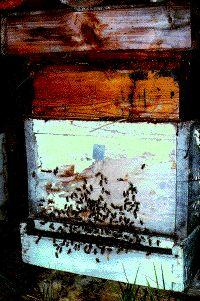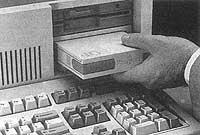Antiques: the charm of the past
1995/08/01 Arrojeria, Eustakio - Elhuyar Zientziaren Komunikazioa | Kaltzada, Pili - Elhuyar Zientziaren Komunikazioa Iturria: Elhuyar aldizkaria
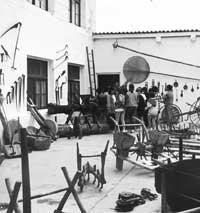
Elhuyar: The exhibition “Antiques” has its origin in a project presented in the Department of Culture of the Diputación Foral de Gipuzkoa. What does this project consist of?
F. F. Leizaola: The Aranzadi Ethnography Section has been researching the historical heritage of Gipuzkoans for years. It seemed necessary for us to give cohesion and make this work known to society. The presentation before the Diputación is an attempt to round the results of these investigations. From the ethnographic point of view, the pieces stacked in houses or hamlets have a great historical value. Unfortunately, the perception of citizenship is not the same, and it is considered to be objects to be discarded. We forget that ours is a people who live together with this legacy and that all these little pieces that we have gathered give meaning to our life.
On the other hand, it has been considered that the heritage is formed by constructions or pieces of high economic value. On the contrary, we do not give importance to those little things found between dust. However, these little things provide us with great information because they constitute our furniture heritage. Raising awareness of this and making us proud of our history are the main objectives of the “Antiques” project.
Elhuyar: You have already made this experience in several municipalities of Gipuzkoa. What steps must be taken so that we can see those objects?.
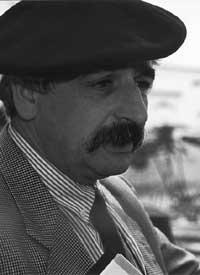
F. F. Leizaola: We turn to the municipalities that have shown interest in the project and we try to involve in the project groups of great specific weight of the municipality. The representatives of the City Council and the members of Aranzadi are also joined by the youth of the schools of the town. In fact, young people have been wanted to be actors in this recovery project. Before starting practical work, we perform two days of exposure to fix the criteria. Once done this begins the external work.
Once grouped the students go to visit the villages of the village. According to the criteria given above, they elaborate a list of objects of interest that they have found in the hamlet. From the ethnographic point of view, although these data are not very accurate, they serve for a first approximation. This means that working with students is a pedagogical and non-scientific work. This experience allows them to know the reality that exists and is not the own of the people.
This first phase of work lasts for 2 months. Based on the data collected by the students, the members of the Aranzadi Society go to these villages to see and list objects of ethnographic interest. Below are the most important ones for your public exhibition. Although it seems simple, this last step is a great job. On the one hand, we must overcome the mistrust that the owners of these objects can have with us and, on the other hand, we must warn of their importance. That's more difficult than people thought.
Elhuyar: It is undeniable that these pieces exhibited in the exhibition have a sentimental value for citizenship. But scientifically, what will the Aranzadi Ethnography Department use these data for?
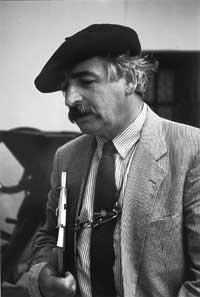
F. F. Leizaola: This project has two main objectives. Raise awareness about the heritage they have in the municipality and complete the Historical Heritage of Gipuzkoa. As for the first objective, local exhibitions offer us this possibility of integration. As for the second, the catalogue of the furniture heritage is being prepared. We classified and signed about 50% of the pieces collected in the villages. The main criterion we use for this is to be a reflection of our heritage. This means that we have prioritized the analysis of the situation of our heritage. We wanted to claim that although many people are null, as an important part of our history, they must be kept and respected.
Elhuyar: How would you value the work done so far?
F. F. Leizaola: It has been very enriching. In Aranzadi we have spent many years in similar tasks, but this project has allowed us to perform a more accurate X-ray. So far we have been in Andoain, Zerain, Asteasu, Azpeitia, Zaldibia, Deba, Errezil and Usurbil, and we would like to go to more municipalities to complete our work. In any case, what was done so far would be impossible without the help of those who welcomed us in those villages. The Aranzadi Society is making a great effort to make our heritage known better. That serves to help recover the dignity of our past.
Fermin Leizaola complained about the indifference that society has shown today about historical heritage. “The pieces stacked in houses or hamlets have a great ethnographic value. Unfortunately, citizens do not have the same perception, and often discard these objects. We forget that ours is a people who live together with this legacy and that all these little pieces that we have gathered give meaning to our lives.”
Fermin stressed that these small things that make up the furniture heritage have the same historical value as the great constructions: “To these little things that are among dust we give no importance. However, these little things provide us with great information because they constitute our furniture heritage. Raising awareness of this and making us proud of our history are the main objectives of the “Antiques” project.
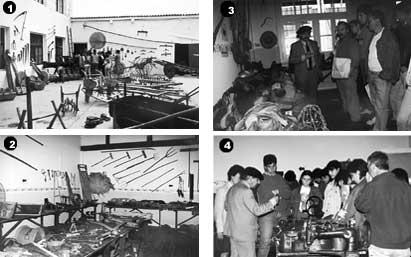
Below we will make a brief explanation of the photographs.
In the first and second photos you can see the useful of the hamlet. Leizaola told us that this type of material requires a great previous preparation, since, among other things, the pieces should be cleaned, treated and exposed. In any case, the project “Zaharrinak” is a simple exhibition, so the detailed treatment of the pieces is not given for placement in the museums.
In the third image you can see the reefs. According to the coordinator of the Aranzadi Science Society, all kinds of elements have been collected. Fermin also told us that the yokes of Euskal Herria have their own characteristics.
In the room you can see the household supplies: sewing machines, smooth irons, etc. These pieces are especially attractive to the visitor. They explain how ancient life was, and although they have a direct relationship with the household utensils we use today, the evolution of these years is evident.
In the fifth, Fermin shows the smoke bellows and beehive used by beekeepers.
In the sixth photo are shown the useful angles. With the aim of accommodating local particularities, Usurbil’s “Zaharrinak” project has shown the tools and tools used to capture angles.
In the seventh photo you can see the tools of carpentry. The small and large pieces were placed at the same time in the exhibition of Usurbil.
In the eighth photo you can see the old kaiku. Besides the Basque Country, kaikus are not used, which gives an intrinsic value to the kaiku used in our hamlets for the decrease of cows and sheep.
The ninth photo shows us the photos, images and ancient documents ceded by the baserritarras of the village. Curiously, these pieces have a great value to analyze the evolution of society.
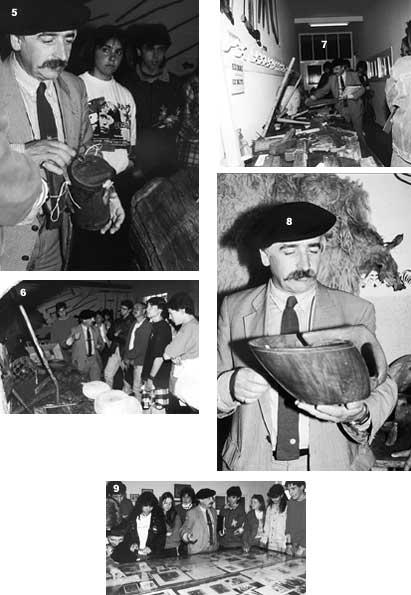

Gai honi buruzko eduki gehiago
Elhuyarrek garatutako teknologia




